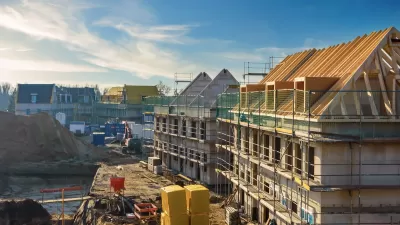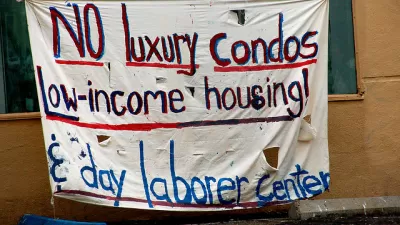Some urbanism commentators suggest that gentrification is the result of a "rent gap" between actual and potential rent. How should this theory affect zoning policy?

The "rent gap" theory offers on the common explanations for gentrification. According to this theory, investors will be most tempted to purchase land when there is a disparity between the current rental income of the land and the potentially achievable rental income. The theory makes sense at first glance—why invest money in land if you cannot make a profit on it?
What is more controversial is the use of rent gap theory to justify opposition to new market-rate housing. One argument is that if new market-rate housing is built, landlords will discover that they can afford to charge more rent for existing housing, and thus start raising rents and evicting tenants. Thus, it is argued, market-rate housing in lower-income areas leads to gentrification and the displacement of poorer tenants. It seems to me, however, that the logic of this argument supports no new market-rate housing anywhere: if new housing raises rents, obviously any new housing (other than government-subsidized low-income housing) is bad.
It seems to me, however, that this version of rent gap theory is based on a couple of questionable assumptions. First, it overlooks the effect of zoning on "potentially achievable rental income." It seems to me that anti-housing zoning actually increases potential rent: a city that severely limits the supply of housing will normally increase the price of such housing, which in turn means that the rental income potentially available to a new building's landlord will be much, much higher than the rental income that a landlord might get in a more permissive city. It follows that restrictive zoning may increase the rent gap, rather than erasing the rent gap.
Second, the use of rent gap theory to oppose new housing makes sense only if new housing increases the value of existing housing nearby, thus creating a rent gap where none existed. In theory, this might be true if new housing leads to amenities that make the existing housing more attractive. On the other hand, some studies suggest that new housing not only holds citywide rents down by increasing housing supply, but might even have the same effect on nearby housing. For example, a new study by Evan Mast and two other economists finds that new market-rate units lower rents in nearby buildings by 5 to 7 percent. Thus, new housing might not be the cause of a rent gap. More broadly, new housing might be the result of gentrification rather than the cause—otherwise, neighborhoods like New York’s West Village (which have experienced less new construction than other city neighborhoods) would never gentrify.
So even if the rent gap theory is to some extent valid, it does not follow that it justifies opposition to new housing.

Planetizen Federal Action Tracker
A weekly monitor of how Trump’s orders and actions are impacting planners and planning in America.

Congressman Proposes Bill to Rename DC Metro “Trump Train”
The Make Autorail Great Again Act would withhold federal funding to the system until the Washington Metropolitan Area Transit Authority (WMATA), rebrands as the Washington Metropolitan Authority for Greater Access (WMAGA).

The Simple Legislative Tool Transforming Vacant Downtowns
In California, Michigan and Georgia, an easy win is bringing dollars — and delight — back to city centers.

The States Losing Rural Delivery Rooms at an Alarming Pace
In some states, as few as 9% of rural hospitals still deliver babies. As a result, rising pre-term births, no adequate pre-term care and "harrowing" close calls are a growing reality.

The Small South Asian Republic Going all in on EVs
Thanks to one simple policy change less than five years ago, 65% of new cars in this Himalayan country are now electric.

DC Backpedals on Bike Lane Protection, Swaps Barriers for Paint
Citing aesthetic concerns, the city is removing the concrete barriers and flexposts that once separated Arizona Avenue cyclists from motor vehicles.
Urban Design for Planners 1: Software Tools
This six-course series explores essential urban design concepts using open source software and equips planners with the tools they need to participate fully in the urban design process.
Planning for Universal Design
Learn the tools for implementing Universal Design in planning regulations.
Smith Gee Studio
City of Charlotte
City of Camden Redevelopment Agency
City of Astoria
Transportation Research & Education Center (TREC) at Portland State University
US High Speed Rail Association
City of Camden Redevelopment Agency
Municipality of Princeton (NJ)






























